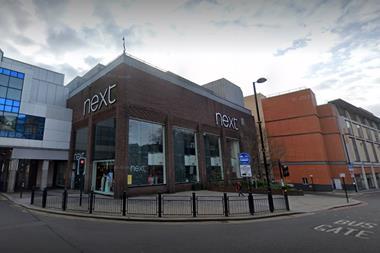The last couple of years have been extremely challenging for the UK retail construction market, with a toxic mix of COVID, post-Brexit recruitment drains and inflation putting pressure on an already squeezed industry.

But there are some reasons to be cautiously optimistic, and it appears the sector will experience a modest growth over the next 12 months if economic predictions prove accurate.
In its most recent forecast, construction intelligence experts Glenigan indicated retail construction growth of 5% over 2022,[1] and its February Construction Review saw a significant jump in granted planning approvals (+18%).[2] However, this sanguinity needs to be tempered given current geopolitical events, which have exacerbated existing supply chain issues.
Faced with the rising price of FMCG raw materials, rocketing operational costs and a significant move to online purchasing, physical retailers are having to navigate tricky waters in today’s market when it comes to profitability; in turn, this is affecting the margins of construction contractors and subcontractors in this vertical.
Whilst issues around shopper purchasing behaviour and preferences are not going to abate any time soon, it’s hoped that the other supply chain-led barriers to the construction of new assets will eventually ease.
Unfortunately, in the short term, it looks as if building product costs will remain high, especially for essential, imported structural elements like structural timber, steel and precast. As long the Russia-Ukraine persists, prices are likely to jump even further.
As such, anyone involved in retail construction will be looking for ways to mitigate lost earnings during these extraordinary times. One approach, gaining considerable popularity, is to focus on driving up quality, reducing any potential waste through removing any margin of error.
In particular, the latest digital construction software, is helping to increase accuracy within the building phase of new retail units, lowering the likelihood of rework and remediation, bringing these assets online sooner. This not only allows retailers to get stores built and trading on-time, and subsequently more shoppers through the doors sooner, but also benefits the contractor through no delays in project journey.
To this, I would like to take the opportunity to outline why those working within retail construction need to see digital tools as a crucial support during these challenging times, helping to keep projects on-brief, on-track and on-time.
According to the construction sector-backed NPO Get it Right Initiative (GIRI), the direct cost of avoidable error across the industry is around 5% of project value. This is well in excess of UK average profit levels, costing approximately £5bn a year. It’s an unnecessary cost borne by the contractor and asset owner, but the good news is digital construction is addressing it head-on

Now, longstanding issues around quality control are being overcome through the latest construction management software, which is delivering greater assurances and spotting potential design deviations promptly.
For example, in-built data capture functions in these platforms, are allowing information to be entered with ease, delivering greater accuracy by qualified experts on-site. These functions have also been designed to replicate day-to-day paperwork, such as worksheets and key documents such as site diaries or health and safety audits. As users are already familiar with the forms and processes, they can get up and running quickly with minimal training.
By providing an automated solution to traditionally manual data capture methods, users are also avoiding the risk of human error which often occurs when transcribing hand written notes. For retail asset owners who like to keep a close eye on progress, it also means that reports can be generated in-app for quick access, removing the need to duplicate work. Importantly, it creates a water-tight, tamper free audit trail tracking every detail of each project.
Digital platforms also enable developers and project managers to tackle one of the most common causes of construction quality issues, miscommunication. In an industry prone to data siloes, where subcontractors are often only given information about their specific tasks rather than overall project goals, many quality issues are caused by simple misunderstandings or a lack of up-to-date information.
In these cases, the provision of a single channel for collaboration can have an immediate impact. By offering all team members access to the latest plans and creating a structured way to request additional information, construction managers can dramatically reduce the number of avoidable mistakes present within their project.
Further, in a sector more vulnerable to external forces than most, having digital software in place that can mitigate market disturbance should be seen as invaluable to retailers with large portfolios of planned new assets.
With supply chain shortages and eye-watering material costs likely to persist, those working with contractors with the right digital tools in place, will be in a better position to manage the profitability of projects going forward.
With tight margins set to get even tighter, everyone involved in retail construction will be looking to make incremental gains wherever possible. Getting the construction phase right, first time, removes the rework phase and as a result reduces materials, energy and man hours wasted, helping to increase much needed revenue through higher quality.
For me it makes a strong, clear case for why digital tools should be seen as essential in the construction of new retail units and facilities. What might seems a significant upfront investment now will pay huge dividends in the long-term, once again proving technology is key to unlocking value for contractor, asset owner, retailer, shareholder and shopper alike.
By Ibrahim Imam, Co-Founder & Co-CEO, PlanRadar






























No comments yet